|
Sonic Youth is the perfect candidate for the first round of Discographied. As I’ve mentioned before, I enjoy them, but haven’t spent time with a solid chunk of their catalog. At fifteen full-length LPs, that’s no surprise, but given the variance of opinion on their albums past Daydream Nation and Sister, it’s understandable. Fifteen is even a conservative number, excluding the eight EPs of experimental recordings released under the SYR banner, their self-titled debut EP, seven other EPs, soundtracks, singles, bootlegs, solo releases, and the Ciccone Youth side project LP. Needless to say, this endeavor will not be comprehensive. If you want a more comprehensive take on Sonic Youth, consult Mark Prindle.
I’ve chosen to listen to the fifteen LPs and their self-titled debut EP, disregarding any bonus tracks appearing on reissues. Will I miss out on some great songs by ignoring all of those other releases? Sure. Would hearing the noisier, more experimental side of Sonic Youth give me a better sense of their overall aesthetic? Naturally. Would listening to every last song drive me completely insane? Dear God, yes. If you’d like to suggest a few essential peripheral releases, I’m all ears, and will get to them in a bonus round once I’m through with their full-lengths.
This entry will cover their first EP and their first five LPs: Confusion Is Sex, Bad Moon Rising, EVOL, Sister, and Daydream Nation, which is a nice arc covering their 1980s releases and ending before their signing with Geffen.
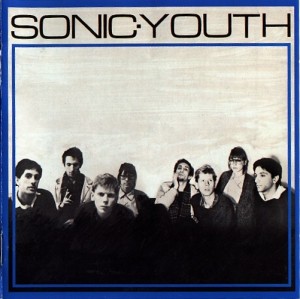
Sonic Youth EP – Neutral, 1982
Highlights: “The Burning Spear,” roughly half of “The Good and the Bad.”
Low Points: The other three songs.
Overall: My prior idea of early Sonic Youth being “unbridled noise that slowly formed into more discernable songs” is completely destroyed by their debut EP. Their lone release featuring original drummer Richard Edson*, Sonic Youth is remarkably mellow. This EP has virtually no guitar noise or feedback and instead emphasizes rototom-heavy drumming, giving it a beatnik vibe in spots. Much like Killing Joke’s debut EP, Sonic Youth feels more in line with the prevailing musical tendencies of the post-punk era than with the signature style featured on their debut full-length. “The Burning Spear,” in spite of a notable Gang of Four influence, is the most memorable track, pushing the guitar chimes to the front and even adding a power-drill wail. “I Dreamed I Dream” features the earliest instance of Kim Gordon’s penchant for artistic sloganeering when she mumbles “Fucking youth / Working youth,” but this blueprint that got significantly better upon reuse. “She Is Not Alone” and “I Don’t Want to Push It” are purely for Edson fans, since the former plods along with only a few guitar chimes and some laconic Thurston Moore vocals keeping me awake and the latter actually features a drum solo. “The Good and the Bad” is an eight-minute long instrumental that begs for more guitar noise and less busy drumming. Gordon keeps it afloat at times, but it’s a losing cause. Cut in half, it would’ve been a solid track, but their guitar textures are simply not interesting enough at this stage to justify such aimless drifting.
Have I mentioned that this EP primarily features standard guitar tunings? Yes, that’s a big sign that Sonic Youth is a false start at the beginning of their catalog. Elements of their signature sound are present, but only “The Burning Spear” brings them to the forefront. Richard Edson simply doesn’t mesh with the group’s style and throws off the tone of these songs. Fortunately, they make some significant progress over their next fifteen LPs, so I won’t judge them too harshly for this one.
*Fun fact: I had no idea that Richard Edson was the parking attendant in Ferris Bueller’s Day Off and Vito in Do the Right Thing.
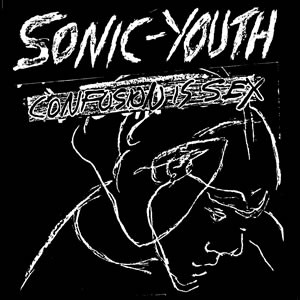
Confusion Is Sex – Neutral, 1983
Highlights: “(She’s in a) Bad Mood,” “Protect Me You,” “The World Looks Red”
Low Points: “Confusion Is Next,” “Making the Nature Scene”
Overall: From its queasy opening chords, Confusion Is Sex opens the proper Sonic Youth era. Gone is the beatnik vibe of the Richard Edson days; enter a newfound emphasis on confrontation and noise as bastions of their approach. Confrontation too often feels forced within music, but it makes an enormous amount of sense within Sonic Youth’s historical and cultural context circa 1983. It’s profoundly different from the more literal take on confrontation favored by hardcore bands like Black Flag and Minor Threat, but no less visceral. This context doesn’t excuse the too-frequent indulges of performance art dramatics, but I’ll take those over the boredom of “She Is Not Alone” in a heartbeat.
The Moore-sung “(She’s in a) Bad Mood” and the Gordon-fronted “Protect Me You” start Confusion Is Sex with an overwhelming sense of doom and gloom. There’s not much structure to be found, but the guitars chime and clang with spooky energy, the bass rumble amplifies the tension, and temporary drummer Jim Sclavunos’s performance is recorded poorly enough to sound menacing. Maintaining this atmosphere proves to be an issue, however. Feedback experiment “Freezer Burn” leads into a live take of the Stooges’ “I Wanna Be Your Dog,” which is a head-shaking drop in fidelity, but at least the latter features Bob Bert’s powerful drumming. “Shaking Hell” starts off with the Gang of Four-esque funkiness from the Sonic Youth EP, but quickly takes a turn down the dark alley where Kim Gordon chants “Shake off your flesh” like a bloodthirsty vagrant. “Inhuman” is defiantly lo-fi rocker with an energy that I hardly anticipated during the first two songs. “The World Looks Red” features lyrics from Swans’ Michael Gira, but it’s Moore’s clear vocal performance and the dueling guitar noises—one sounds like a music box being played backwards at half-speed—that set the song apart. Sadly, the last two proper songs shit the proverbial bed.
“Confusion Is Next” is a clanging, tuneless headache that’s not excused by the punk blast in its final minute. “Making the Nature Scene” is a rambling, Kim-Gordon-yells-things track. At least the instrumental “Lee Is Free” ends Confusion on an interesting note, compiling an array of guitar textures that sound like malformed church bells and frog calls. Its impact is lessened, however, by my utmost certainty that Moore and Ranaldo have thousands of hours of practice tapes with similarly wonky tones.
I’ll commend Confusion Is Sex for being a record of intriguing ideas, but without structure and focus, too many of these ideas veer off course. I was foolish to expect the album to maintain the portentous clamor of its first two songs, but the chaotic flow and weaker tracks diminish the genuinely disorienting feeling of songs like “Protect Me You” and “Shaking Hell.”
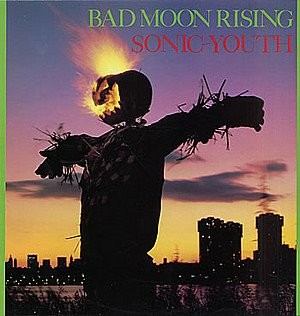
Bad Moon Rising – Homestead, 1985
Highlights: “Brave Men Run (In My Family),” “I Love Her All the Time,” “Death Valley ’69”
Low Points: “Society Is a Hole,” “Ghost Bitch”
Overall: True to its title, Bad Moon Rising feels like a late-night drive down a west Texas highway, as sleeplessness slowly turns into insanity, everyone turns on each other, and morning never arrives. Without the chaotic bits interrupting the sense of portentous doom that began Confusion Is Sex, this mood can actually ebb and flow on Bad Moon Rising, much like the back-half of Wipers’ Youth of America. A consistent rhythmic drone and brief segues between songs tie the album together as a single piece. It’s a marked improvement over Confusion and a proper, timely statement (much like the Wipers’ album), but the individual songs settle into the whole instead of standing apart.
Bad Moon Rising starts on a high note with the mesmerizing arpeggios of “Intro” leading seamlessly into the relatively bright chords of Gordon’s “Brave Men Run (In My Family).” Gordon’s vocals capture the perfect level of distanced danger and violence, matching the song’s transition from its optimistically bright beginning to the heightened caution of its fade-out. Sticking with the highlights, “I Love Her All the Time” is a buzzing love song occasionally punctuated by bursts of distorted guitars and drums. “I’m Insane” appropriates industrial rhythms for Moore’s focused delivery of lines from the back covers of pulp fiction novels.
Moore and Gordon each provides a misstep. Moore’s “Society Is a Hole” demonstrates the album’s biggest strength—cohesion—also contributes to a notable weakness: at six minutes, it’s simply too long for a one-chord drone dismissal of modern society. “Ghost Bitch” is the album’s requisite dose of Kim Gordon irritation, her melody-free vocals chanting over rudimentary industrial pounding. The beginning of the song provides some interesting ambient feedback, but once the Gordon vocals come in, that’s all I hear.
The majority of the record falls into this rhythmic drone, but album closer “Death Valley ’69” breaks the tension with a much-needed dose of energy. (Can’t help but think, “We made it to the tire fire, guys! We did it!”) No Wave pioneer Lydia Lunch is the rare vocalist who is able to out-pretense Kim Gordon, which is an accomplishment on an album containing the pained drone poetry of “Ghost Bitch,” but her mirrored duet with Moore is less irritating and more intense than I’d expect. No surprise that this song is one of the hallmark tracks of early Sonic Youth.
Considering that “Death Valley ’69” and “Brave Men Run (In My Family)” comprised a pre-album single, I’m inclined to bring Bad Moon Rising down a notch, but its overall atmosphere is worth hearing as a whole. While those songs are the clear highlights, they also feed into a compelling album arc. Bad Moon Rising would, however, be better off as a mini-LP, trimming some of the fat from “Society Is a Hole” and “Ghost Bitch.”
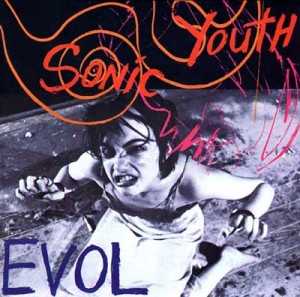
EVOL – SST, 1986
Highlights: “Tom Violence,” “Shadow of a Doubt,” “Star Power,” “Expressway to Yr Skull”
Low Points: “Death to Our Friends” isn’t necessary, but it’s not bad either
Overall: I haven’t stressed this point until now, but pre-EVOL Sonic Youth suffers from the “You had to be there” syndrome of certain groundbreaking art. Those early records were particularly exciting because they caught a genre in transition—moving away from prevailing contemporary ideas, pulling in outside influences, expunging tired clichés. 25 years later, the shock value of that movement is largely gone, but those documents remain. I can appreciate those albums for what they are—for the 2010 listening experience of Confusion Is Sex or Bad Moon Rising documented above—but I can’t fully appreciate what it was like hearing those albums in the context of 1980s underground rock. So much of what Sonic Youth brought into underground rock has since been normalized, so things like wonky alternate tunings (Polvo, ahem), prepared guitar treatments, drone-oriented soundscapes (Kranky Records), and postmodern nightmares (Godspeed You Black Emperor’s F# A# Infinity would be an apt companion piece for Bad Moon Rising) now seem strangely commonplace. I can’t blame Sonic Youth for their timeliness and innovation, but I can prefer the more timeless material those early experimental records evolved into, starting with this aptly titled album.
Bad Moon Rising demonstrated Sonic Youth’s newfound ability to shape their avant-garde influences into an actual album arc, but excluding “Death Valley ’69” and “Brave Men Run (In My Family),” its songs were still dominated by their experimental lineage and their confrontational stance toward rock and roll norms (melody, for one). EVOL opts to subvert from within by embracing shorter songs and memorable melodies, trading confrontation for listenability. Those elements still take a backseat to the creative approaches to guitar and song structures, but their presence helps EVOL tremendously.
I’ll hand it to Kim Gordon; barring the first 1:15 of “Secret Girl”—an unnecessary soundscape delaying the entrance of the disturbingly pretty piano part—her three songs on EVOL are all top notch. “Secret Girl” shows that ornate beauty can still be unnerving. “Starpower” limits the vocals, letting the disorienting guitar and bass parts dominate the song. And “Shadow of a Doubt”? I’ll be stunned if I come across a better Kim Gordon song on one of the remaining albums. The layered harmonics—pulled lower than usual thanks to those alternate tunings—would alone make for a wonderful song, but it’s Gordon’s alternately hushed and feverish delivery that sets the song apart, reciting the combination of sex and murder inspired by Hitchcock’s Shadow of a Doubt and Strangers on a Train. The intimacy in “Shadow of a Doubt” is truly impressive; even in a song about two films, there’s no distance between the Gordon and the subject matter.
Thurston Moore also has three excellent songs—the excellent opener “Tom Violence,” the woozily propulsive “Green Light,” and the notoriously great closer “Expressway to Yr Skull.” Moore opens the last with “We’re gonna kill the California girls,” but unlike the threats of violence on Bad Moon Rising, this sentiment is marked by its nonchalance. It’s supposedly about Madonna and Sean Penn, but the lyrics are so vague that any cultural criticism is effectively irrelevent. “Expressway to Yr Skull” is all about the rise and fall of its guitar-driven rollercoaster. After a few ups and downs, the final two minutes of ambient echoes closing out the album feel earned. (I know I vowed not to listen to the bonus tracks, but a few times the cover of “Bubblegum” has come up after “Expressway” and it’s unendurably terrible.)
Another strength of EVOL is how even its weaker songs aren’t particularly bad, they just don’t measure up to “Shadow of a Doubt” and “Expressway to Yr Skull.” Lee Ranaldo’s “In the Kingdom #19” is a poem about a car crash with Mike Watt on bass (shortly after the D. Boon car crash, even). Its engine-revving guitars are neat, but after a few spins of EVOL I’m tempted to skip it. “Death to Our Friends” is a decidedly competent instrumental. Moore’s “Marilyn Moore” is essentially one of the droning cultural critiques from Bad Moon Rising performed with the cleaner aesthetic of EVOL, but there are a few moments when the buzzing guitar noises gives way to an affecting calm.
I can appreciate Bad Moon Rising, but I don’t anticipate ever loving it. EVOL, however, floored me on the first listen and kept me coming back for more. I’m almost reluctant to move onto Sister, since I’d rather stick with “Shadow of a Doubt,” “Starpower,” and “Expressway to Yr Skull” for a few more days. For the first time in their catalog, there’s no need to reconcile the difference in eras. EVOL has lost nothing in the last 24 years.
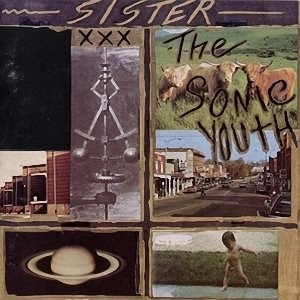
Sister – SST, 1987
Highlights: “Schizophrenia,” “Beauty Lies in the Eye,” “Stereo Sanctity,” “Cotton Crown”
Low Points: “Hot Wire My Heart,” the “Kill Time” part of “Pipeline/Kill Time”
Overall: The fundamental question about Sonic Youth albums changes with Sister. It’s no longer “Is this stage of their development interesting out of its historical context?” EVOL answered that one definitively. Now it’s “Is the songwriting on this album consistently good?” Sure, there may be a sharper change in the approach to the songwriting on a given album, presumably Dirty and NYC Ghosts & Flowers, but most of their avant-garde impulses will be pushed to non-album material from here on out, whether it’s the Ciccone Youth album, the Fall covers EP, or the SYR series of EPs. This divide maintains Sonic Youth’s experimental side (and their street cred), but it also means that their official LPs are now known quantities with a certain level of expected quality.
Sister certainly exceeds such expectations, both fitting into the prevailing sound of late 1980s indie rock and dictating what groups would rip off in the years to come. Virtually every one of these songs offers at least one of the following, if not all of them: a tricky verse guitar part; an insistent vocal hook; a mesmerizing noise bridge; a dramatically effective change of pace. If pure songwriting is the determinant of success, Sonic Youth nailed it. I spent far longer with this album than I anticipated, since every time I’d hear something new, some new song would stand out from the fray.
The majority of those highlights are Thurston Moore tracks, which vaults him to the top of the SY totem pole for this go-around. Although “Expressway to Yr Skull” is the most notorious song from EVOL, Kim Gordon contributed “Shadow of a Doubt”—its best song—and two other solid tracks, giving her a higher success rate than Moore. (Lee Ranaldo, buddy, you need more than one song to get in this fight.) This time it’s Moore with the tremendous success rate. Opener “Schizophrenia” is primarily a Moore song, a mid-tempo demonstration of their newfound melodic instincts and their invitingly warm guitar tone, but Gordon does appear midway through with a dreamy embodiment of the song’s titular theme. “(I Got a) Catholic Block” is a nervy post-punk song that covers a remarkable amount of ground in less than three and a half minutes. “Stereo Sanctity” features some excellent surf-inspired drumming from Steve Shelley, which forms a pounding underbelly for Ranaldo and Moore’s strafing. “Tuff Gnarl” wrote a good amount of 1990s indie rock with its opening verse (including at least one Rectangle song), but Moore doesn’t wear out its welcome, making the descent into noise even more noticeable. “Cotton Crown” is a Moore/Gordon duet—I’m surprised that there haven’t been more of these—that gradually twists its carefree lilt into the best noise bridge on the album. “White Cross” is one final blast of tricky indie rock to close out the album. Six original Moore songs (two with Gordon assistance), six winners.
Moore hardly has the exclusive rights to Sister, since Gordon and Ranaldo each contribute a great song of their own. Gordon’s “Beauty Lies in the Eye” is shockingly lovely, an even more drugged-up version of Mazzy Star’s desert shoegaze. Ranaldo’s “Pipeline/Kill Time” starts with two minutes of a downright boogie that easily makes up for the growing distance between his vocal performance and the increasingly melodic deliveries of Moore and Gordon.
There are a few slight issues. The cover of Crime’s “Hot Wire My Heart” gives some 1980s scene recognition to an early California punk band, but the song’s punk minimalism ultimately sounds too removed from the rest of the album. Making the song a b-side or hidden track would have been preferred. As much as I dig the “Pipeline” half of Ranaldo’s lone track, the “Kill Time” half does just that, wandering for about for two and a half minutes. Yes, it makes sense thematically in the song, but it takes away some of the momentum from “Stereo Sanctity” and “Tuff Gnarl.” Finally, Gordon’s “Pacific Coast Highway” is a love/hate affair; I love how they brought back the industrial nightmare of Bad Moon Rising with more focus, I love the switch to the floating instrumental mid-section, but I cannot stand how Kim Gordon says, “I won’t hurt you / As much as you hurt me.” Words cannot express how much her delivery of “me” irks me. If that’s the point, kudos, but that one syllable makes me itch to skip the song.
Sister lacks a definitive song like “Death Valley ’69,” “Expressway to Yr Skull,” or “Teen Age Riot,” but its consistency is remarkable, even with those minor missteps. It’s not the edgy early stuff, the first instance of excellent songwriting, or their double-album epic, but Sister’s comparatively less exciting dominant trait—being a great single LP—shouldn’t be undervalued. I suspect Sister will stick around my playlist for a while.
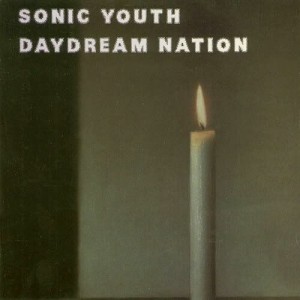
Daydream Nation – Enigma, 1988
Highlights: “Teen Age Riot,” “’Cross the Breeze,” “Total Trash,” “Hey Joni,” first two parts of “The Trilogy”
Low Points: “Eliminator Jr.,” “Providence,” lyrics in “The Sprawl”
Overall: Sonic Youth had certainly been important, exciting, and influential prior to Daydream Nation, but this album made them icons of alternative/independent rock. (That sentence was auto-completed by Microsoft Word once I typed Daydream Nation.) To put it in more personal terms, there was no debate as to the first Sonic Youth album to pick up when I was in high school. I doubt that I’d heard any of the album prior to buying it, even “Teen Age Riot,” because of my lack of indie-oriented friends, but I’d done enough reading to know which one to buy.
Being confronted with a double LP as my first taste of the group, however, seems foolhardy in retrospect. Loved “Teen Age Riot,” sure, but I could probably count my total spins of the entire album on one hand prior to this week. Getting stuck on a particularly great first track is a specific problem of mine (Rex’s Rex, Pinebender’s Things Are About to Get Weird), and the difference between the inviting riffs of “Teen Age Riot” and the dissonant propulsion of “Silver Rocket” was enough to make it happen. The latter features the noise bridge that so many EVOL and Sister songs utilize, but since I hadn’t heard those records, I couldn’t recognize that trick. Now that I can pick up on Sonic Youth’s structural tendencies, the album doesn’t seem so daunting. (I’m also thirteen years older, so I’d imagine that plays into it as well, but let’s return to the actual album.)
There’s no point to saying that Daydream Nation is great. It is. Any devil’s advocate arguments seem like pointless trolling. The most scathing criticisms (only 8/10 from Prindle!) I’ve found mention that a few of the songs don’t measure up to the highlights. I’d argue that it’s true, but ultimately irrelevant. “Eliminator Jr.,” the Kim Gordon punk conclusion to “The Trilogy,” is most frequently cited, but I don’t think its lady cock-rock is inherently bad, just a strange tonal switch following “Hyperstation.” The noise collage “Providence” is unnecessary, but reality check: is Sonic Youth really going to record a double album without including at least one formless noise collage? Come on. Fewer people critique Kim Gordon’s feminist, proto-riot grrrl lyrics in “The Sprawl,” but some, including myself, find them a touch tedious. Yet the song itself is great and most of it is instrumental. Finally, most “critical” reviews have issue with one of the three Lee Ranaldo songs, usually “Eric’s Trip” or “Rain King,” but I felt like all three of his songs are marked improvements over his past output, especially “Hey Joni.” On an album with fourteen tracks (counting “The Trilogy” as separate songs), two or three low points is expected. The overall quality remains superb.
The high points of Daydream Nation are almost unfairly assured as forward-thinking rock songs. The riffs feel more traditional, based more often on crystalline arpeggios and roaring chord progressions than the wonky noise leads that dominate those earlier records, but none of them feel dumbed down in the slightest. Even with its dreamy Kim Gordon open, “Teen Age Riot” never veers off course into a noise bridge. Prior to Daydream Nation, Sonic Youth reveled in those noise parts of the songs, even presenting them as the true attractions to the songs. This approach gradually evolved over the previous two records, but “Teen Age Riot” is when they recognize how great their hooks can be. Gordon’s “The Sprawl” and “’Cross the Breeze” each stretch out past seven minutes, but it’s hard to find a moment in “The Sprawl” when the melody isn’t floating along in its closing mist or one in “’Cross the Breeze” when its considerably momentum is completely gone. The beginning of “Total Trash” is so casually endearing, predicting countless Stephen Malkmus deliveries. “Hey Joni” is the relentless Ranaldo rocker that “In the Kingdom” and “Pipeline” could only hit at, choosing to accelerate rather than drift into aimless noise. The first two parts of “The Trilogy” cash in on the epic dynamics of “Expressway to Yr Skull” with even greater peaks and valleys. A few more songs merit mention as highlights, but that’s what happens with a classic double LP.
I keep thinking of Television’s Marquee Moon, one of the towering achievements of 1970s NYC punk, and it’s a telling, flattering comparison. Sonic Youth emerged from the fringes of this scene, initially embracing its more avant-garde tendencies, but the compelling lyrics and confidently creative guitar work on Daydream Nation refers back to that album’s combination of storytelling and songwriting. Sonic Youth took a strange, interesting journey to get to Daydream Nation, whereas Marquee Moon was Television’s debut LP, but each album manages to bring in the past, define the present, and look to the future. Daydream Nation is undoubtedly Sonic Youth’s greatest achievement. How many bands can pull off a double album with minimal fluff? Almost none. What about double albums that crystallize a genre and capture an era at the same time? Even fewer. Its monumental stature, however, doesn’t guarantee that it’s the best album to start with or that it will ultimately be your favorite Sonic Youth album. I may very well prefer Sister, since it’s simply easier to pick up and spin in the car, but that doesn’t take anything away from Daydream Nation.
Clcik here to read about Sonic Youth's 1990s albums
|

